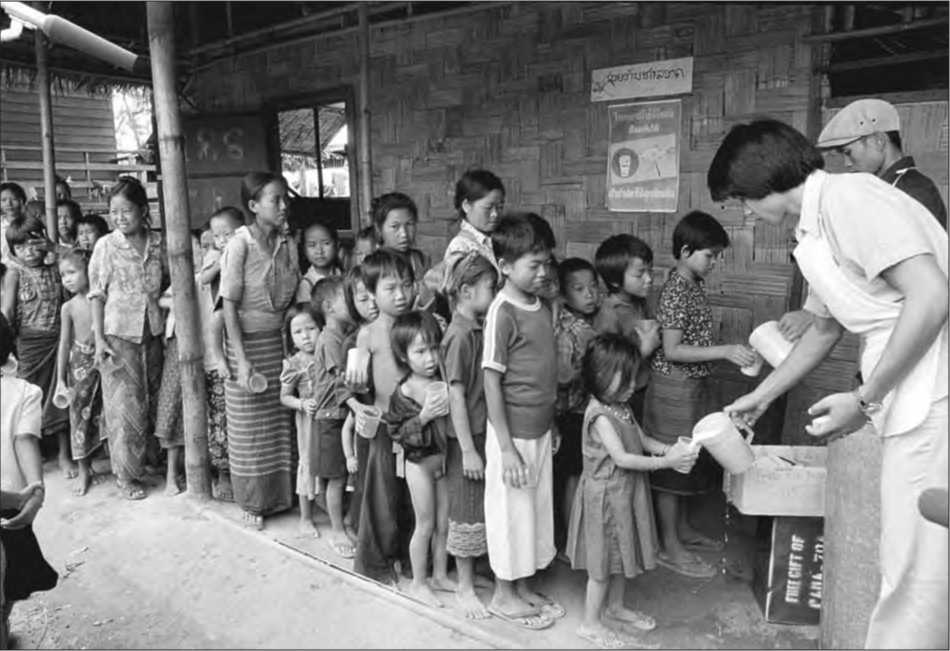Significance: Significant numbers of Laotian immigrants first came to the United States in the wake of the Vietnam War. They have often been lumped together with Vietnamese refugees, but the Laotians have differed in generally having less education, fewer skills, and more assimilation challenges. The Hmong, who fought against communism in Laos, are often included among Laotian immigrants, but these mountain people come from throughout Southeast Asia.
Laos is situated in the center of the Indochinese peninsula at the heart of the Mekong Basin, with Vietnam to the east. The location of the country ensured that it would become caught up in the turmoil of the Vietnam War during the 1960’s and early 1970’s, when its own people were also fighting

Laotian refugee children at a refugee camp in Thailand in 1979. (AP/Wide World Photos)
A civil war. As the United States withdrew from Southeast Asia in 1975, Laotian refugees began to make their way to America. The U. S. government labeled all refugees as “Indochinese” regardless of their countries of origin. As a result, Laotians have been lumped together with the much larger number of Vietnamese refugees who poured into the United States. Consequently, some of the available government information does not represent the pattern of Laotian immigration.
The Laotian refugees came in two major waves, which included ethnic Chinese, Lao minorities (chiefly Lao Theung and Mein), and the Hmong among their numbers. The first wave, from 1975 to 1977, consisted largely of boat people and overland refugees who had spent considerable and often harrowing time in refugee camps in Southeast Asia. Many of these people were Hmong who had fled Laos for refugee camps in Thailand after the communist government of the Pathet Lao took control in December, 1975.
The second wave, consisting largely of Lao minorities who began to arrive in the United States in 1978, resulted from attempts by the new Lao government to consolidate its control over ethnic minorities who had fought earlier for the U. S. Central Intelligence Agency. In 1978, the U. S. government offered “parolee” status to Hmong and other Laotians who had been employees of the U. S. government, with priority given to people who had been persecuted by communists. The 1980 Refugee Act gave the refugees resident-alien status and enabled more Laotians to enter the United States.




 World History
World History


![The General Who Never Lost a Battle [History of the Second World War 29]](https://www.worldhistory.biz/uploads/posts/2015-05/1432581983_1425486253_part-29.jpeg)






